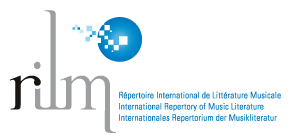El tango, del peringundín a París: un mito sin fuentes y las fuentes del mito.
Palabras clave:
mito, tango, París, documentos, diarios argentinosResumen
El mito sobre el origen del tango repite con algunas variantes que nace en los suburbios, y en peringundines donde lo conocen los niños bien que son eternos transgresores de clase. Prohibido y censurado en Buenos Aires, se consagra en París después de 1910, y vuelve triunfal de la mano del barón Antonio De Marchi, quien lo presenta en 1913, en un baile social, en el Palais de Glace. Recién entonces habría sido aceptado por la oligarquía y copiado por las clases populares y medias en formación.
Este mito del origen es persistente, pero no es cierto. Los documentos registran otra cosa y vale la pena contrastar las versiones de la época, sobre todo con las crónicas que reportan los diarios y las revistas que muestra la existencia de una sociedad muy dinámica sin guetos y que procrea el tango muy rápidamente aceptado.
El artículo describe la trayectoria del mito del “peringundín” a París y demuestra con las fuentes de época, que este mito que niega el aporte inmigratorio, no soporta el cotejo de archivo.
Descargas
Descargas
Publicado
Número
Sección
Licencia
Derechos de autor 2018 Ema Cibotti

Esta obra está bajo una licencia internacional Creative Commons Atribución-NoComercial 4.0.
Atribución/Reconocimiento-NoComercial 4.0 Internacional
https://creativecommons.org/licenses/by-nc/4.0/
Usted es libre de:
- Compartir — copiar y redistribuir el material en cualquier medio o formato.
- Adaptar — remezclar, transformar y construir a partir del material.
- La licenciante no puede revocar estas libertades en tanto usted siga los términos de la licencia
Bajo los siguientes términos:
- Atribución — Usted debe dar crédito de manera adecuada, brindar un enlace a la licencia, e indicar si se han realizado cambios. Puede hacerlo en cualquier forma razonable, pero no de forma tal que sugiera que usted o su uso tienen el apoyo de la licenciante.
- No Comercial — Usted no puede hacer uso del material con propósitos comerciales.
- No hay restricciones adicionales — No puede aplicar términos legales ni medidas tecnológicas que restrinjan legalmente a otras a hacer cualquier uso permitido por la licencia.
Avisos:
No tiene que cumplir con la licencia para elementos del material en el dominio público o cuando su uso esté permitido por una excepción o limitación aplicable.
No se dan garantías. La licencia podría no darle todos los permisos que necesita para el uso que tenga previsto. Por ejemplo, otros derechos como publicidad, privacidad, o derechos morales pueden limitar la forma en que utilice el material.






